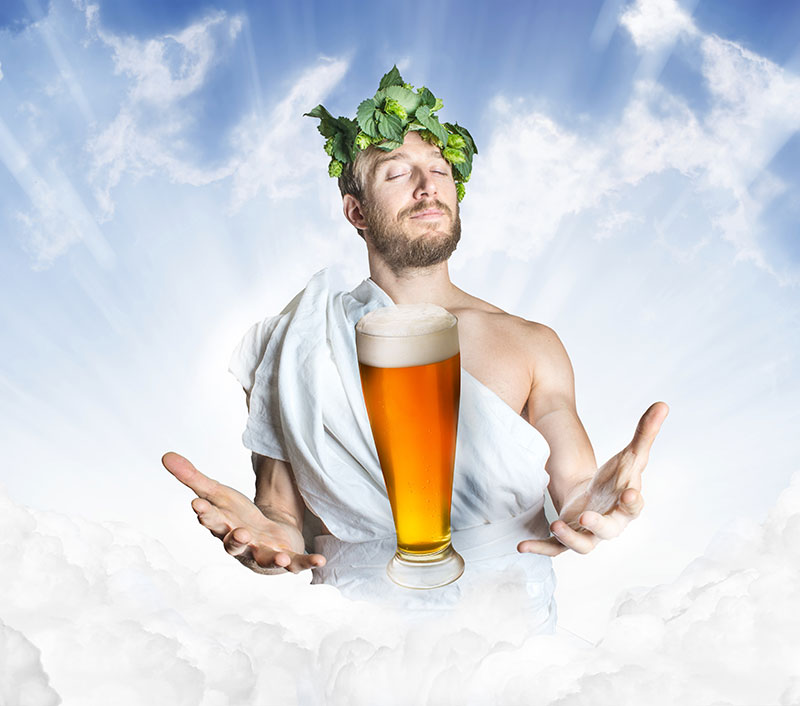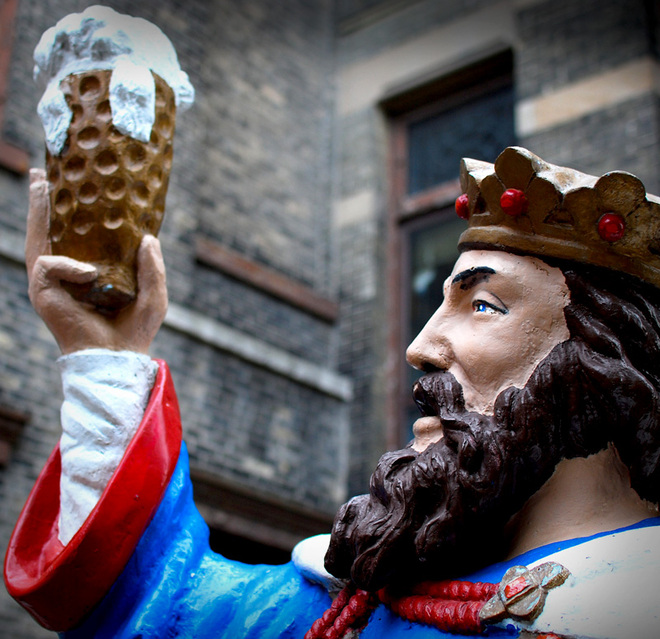
Before the discovery of yeast and the concept of fermentation, the creation of beer was often attributed to divine origins. In fact, yeast and its “magical” properties were once referred to as “god is good,” since there was no reasonable explanation that could be discovered by the naked eye.
And being such a fantastic drink, beer has long been associated with various gods and godly figures in cultures throughout the history of humankind. There is often a common theme across cultures that the god of beer is usually also a god of creation, particularly in regards to fertility and harvest.
Let’s take a look at four of the most prominent beer gods…
Ninkasi
One of the oldest and most renowned of the beer gods is the Sumerian Goddess Ninkasi. First appearing in 4000 BC, Ninkasi is worshiped as the goddess of fertility and the mother of all creation including the growing of grain (barley being her emblem), brewing of beer, and the passion and seduction that may result from a beer-fueled Sumerian party. That being said, she is also accredited as a god of war.
Being the beer god, Ninkasi is not only seen as the reason mortals had such an enchanting elixir to imbibe and worship, but she’s said to be the official brewmaster of the gods. She even went so far as to name her nine children after various intoxicating drinks. How’s that for dedication to the brew?
Interestingly enough, the Sumerians were one,if not the first, ancient civilization to abandon a hunter-gatherer lifestyle in favor of a more sedentary arrangement. This way of life emphasized the importance of agriculture, including the cultivation of barley and the beer it was used to create. It could be said that beer helped advance civilization toward a lifestyle we are familiar with today.
Radegast
The Hymn to Ninkasi
One of the earliest known examples of written language is the Hymn to Ninkasi, written in an ancient Sumerian language on a series of clay tablets. It is said to consist of 2 Sumerian drinking songs that date back to the 18th century BC.
Scholars have been able to come up with acceptable translations, and they discovered the first song deals with the actual brewing process used in Mesopotamia. The second is a song of praise to the goddess Ninkasi for providing the Sumerian people with creation of beer.
Translations of the Hymn to Ninkasi are available.
No, we aren’t talking about the hippy wizard from Tolkein’s Middle Earth. In Slavic mythology, Radegast is an old god of hospitality who is depicted as a powerful, all-black figure. While he is also accredited as the god of war, night and fire, he is said to have created beer to help with his hospitable endeavors. After all, there is no friendlier gesture than sharing a beer with visitors.
Today, you can find a famous statue of Radegast the beer god in the Czech Republic, complete with helmet and spear, as well as a Czech brewery named in his honor.
Mbaba Mwana Waresa
The Zulu region of Southern Africa have a similar goddess to Ninkasi, called Mbaba Mwana Waresa. When the fertility goddess is not hanging out in her rainbow hut in the clouds, Mbaba Mwana Waresa is said to be teaching her people how to sow and reap, thus giving them the ingredients to make beer. She rules over rainbows, agriculture, harvests, water and beer, while having control over things like rain and the quality of harvest, both of which are vital in making beer.
Legend has it that the Zulu god of beer was unable to find true love among her divine peers, so she wandered the earth seeking a mortal lover, which gained her great popularity among the people who worship her. In fact, the Zulu people will often call on the divine inventor of beer when they need guidance in making important decisions.
Gambrinus

Some say King Gambrinus was a real man, while others claim he’s mere legend. Either way, it is assumed that he is likely based off of a real king, though that can’t be known for sure.
While he’s not technically a beer god, and more of a folk-legend, the lore of Gambrinus is godly when it comes to beer. The jolly, almost Burger King-looking Gambrinus is never depicted far from an overflowing mug of ale, or a full barrel for that matter. Legend has it that King Gambrinus learned the art of brewing after trading his soul to the devil in hopes of forgetting his first lost love, and he shared it with his people.
Believe it or not, the newly found hopped beverage was not a big hit among his townspeople, so Gambrinus began throwing huge parties. He would play his chimes and lead people in dancing for hours on end, and when they needed to quench their thirst they reached for his beer. That’s all it took to turn people on to his homemade beer (remember this the next time your friends aren’t digging your homebrew).



Share Post